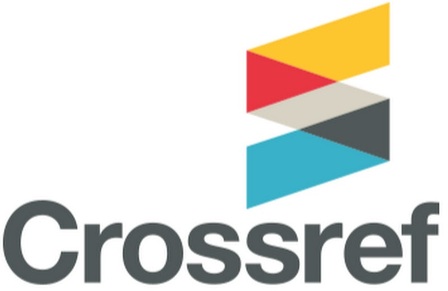The Effect of Tourists' Motivations on Cognitive, Affective, and Unique Image of Bali
(1)
(2) Faculty of Business and Economics University of Surabaya
(3)
(*) Corresponding Author
Abstract
This research examines the effect of tourists’ motivations on cognitive, affective and unique image of Bali. The model used for this study adopted from Llodra-Riere, et al. (2015). The variable of the study consists of information source, motivation, cognitive image, affective image and unique image. The model in this study used six hypotheses. This research is quantitative and causal type research. This study used non-probability and purposive sampling approach, sample characteristics are the Surabaya tourists who had experience in using information sources from internet platform and other information sources which is non-internet platform that been collected information before visiting Bali and have visited Bali at least once in the past one year. The data is obtained from questionnaire that is distributed to 310 respondents and analyze using Structural Equation Modeling (SEM), with SPSS 18 and LISREL 8.8 for measurement and structural model. The result shows that motivation did not influence affective image of Bali. There are five hypotheses are significant. Information sources influence motivation; cognitive image and unique image influence affective image; motivation influences cognitive image and unique image of Bali. The benefit of this research can help tourism industry in Bali to improve their marketing communication by using social media, website platform and online advertisement.
Keywords
Full Text:
PDFReferences
References
Adams, K., Snyder, J., Crooks, V., & Johnston, R. (2015). Tourism discourse and medical tourists motivations to travel. Tourism Review, 70(2), 85-96.
Alberta High Speed Internet Provider Comparison. (2015). The Importance of Internet Service in Today’s Generation. Retrieved July 03, 2017, from Alberta High Speed Internet Provider Comparison: http://www.albertasupernet.ca/the-importance- of-internet-service-in-todays-generation/.
Bagozzi, R., and Youjae, Y. (1988). On the Evaluation of Structural Equation Models. Journal of the Academy of Marketing Science, 74-97.
Baloglu, S. (1999). The Relationship Between Destination Images And Sociodemographic And Trip Characteristics Of International Travelers. Journal of Vacation Marketing, 3(3), 221-233.
Beerli, A., and Martin, J. D. (2004). Factors Influencing Destination Image. Annals of Tourism Research, 31(3), 657-681.
Buyong, E., and Rajiani, I. (2011). Cognitive, Affective Evaluation In Forming Unique Destination Image Among Tourist Visiting Malacca. 7th Global Brand Conference. Oxford.
Chang, L.-L., Backman, K. F., and Huang, Y. C. (2014). Creative Tourism: A Preliminary Examination Of Creative Tourists' Motivation, Experience, Perceived Value And Revisit Intention. International Journal of Culture, Tourism, and Hospitality Research, 8(4), 401-419.
Correia, A., Kozak, M., and Ferradeira, J. (2013). From Tourist Motivations To Tourist Satiscation. International Journal of Culture, Tourism and Hospitality Research, 7(4), 411-421.
Dagustani, Dani, Dwi Kartini, Yevis Marty Oesman, Umi Kaltum. (2018). Destination Image of Tourist: Effect of Travel Motivation and Memorable Experience. Etikonomi, ISSN 1412-8969; E-ISSN 2461-0771.
Eleonora, P., & Di Pietro, L. (2013). From e-tourism to f-tourist: emerging issues from negative tourists' online reviews. Journal of Hospitality and Tourism Technology, 4(3), 211-227.
Gartner, W. C. (1993). Image Formation Process. Journal of Travel and Tourism Marketing, 2(2/3), 191-215.
Hair, J. F., Black, W. C., Babin, B. J., Anderson, R. E., and Tatham, R. L. (1998). Multivariate Data Analysis (5th ed.). New Jersey: Prentice Hall.
Huang, Shuyue, Ye Shen, Chris Choi. (2015). The Effects of Motivation, Satisfaction and Perceived Value on Tourist Recommendation, https://scholarworks.umass.edu/ttra.
Internet World Stats. (2017). Internet Top 20 Countries - Internet Users 2017. Retrieved July 3, 2017, from Internet World Stats - Usage and Population Statistics: http://www.internetworldstats.com/top20.htm
Khan, M. J., Chelliah, S., & Ahmed, S. (2017). Factors Influencing Destination Image and Visit Intention Among Young Women Travellers: Role of Travel Motivation, Perceived Risks, and Travel Constraints. Asia Pacific Journal of Tourism Research. Vol. 22(11): 1139-1155. doi: https://doi.org/10.1080/10941665.2017.1374985.
Kim, H., & Chen, J. S. (2016). Destination Image Formation Process: A Holistic Model. Journal of Vacation Marketing. Vol. 22(2): 154-166. doi: https://doi.org/10.1177/ 1356766715591870.
Kozak, N., and Kozak, M. (2008). Information Sources Svailable To Visitors: A Segmentation Analysis. Tourism Review, 63(4), 4-12.
Llodra-Riere, I., Martínez-Ruiz, M. P., Jiménez-Zarco, A. I., and Izquierdo-Yusta, A. (2015). Assessing The Influence Of Social Media On Tourists' Motivations And Image Formation Of A Destination. International Journal of Quality and Service Sciences, 7(4), 458-482.
Oz, M. (2015). Social Media Utilization Of Tourists For Travel-Related Purposes. International Journal of Contemporary Hospitality Management, 27(5), 1003-1023.
Pratminingsih, S. A., Rudatin, C. L., & Rimenta, T. (2014). Roles of Motivation and Destination Image in Predicting Tourist Revisit Intention: A Case of BandungIndonesia. International Journal of Innovation, Management and Technology. Vol. 5(1): 19-24. doi: https://doi.org/10.7763/IJIMT.2014.V5.479.
Prayag, G., & Ryan, C. (2011). The Relationship Between The ‘Push’and ‘Pull’ Factors of a Tourist Destination: The Role of Nationality– an Analytical Qualitative Research Approach. Current Issues in Tourism. Vol. 14(2): 121-143. doi: https://doi.org/10. 1080/13683501003623802
Qu, H., Kim, L. H., and Im, H. H. (2011). A model of destination branding: integrating the concepts of the branding and destination image. Tourism Management, 32(3), 465-476.
Santos, R. Dulce. (2013). Touristic Destination Image: A Study on Libson's Touristics Destination Image. ISCTE Business School.
Schiffman, Leon. and Kanuk, Leslie Lazar. (1983). Consumer Behavior. Second edition.
Published by Prentice Hall.
Wonderful Indonesia. (2017). Travel to Bali, Indonesia. Retrieved July 3, 2017, from Wonderful Indonesia: http://www.indonesia.travel/en/destination/province/bali
Wu, S.-I., and Yu-Hua, Z. (2014). The Influence Of Tourism Image And Activities Appeal On Tourist Loyalty - A Study Of Tainan City In Taiwan. Journal of Management and Strategy, 5(4), 121-135.
Zhang, H., Wu, Y., & Buhalis, D. (2017). A Model of Perceived Image, Memorable Tourism Experiences and Revisit Intention. Journal of Destination Marketing & Management. Vol. 8: 326-336. doi: https://doi.org/10.1016/j.jdmm.2017.06.004
DOI: https://doi.org/10.24123/jmb.v19i2.435
Article Metrics
Abstract view : 758 timesPDF - 216 times
Refbacks
- There are currently no refbacks.
Copyright (c) 2020 Christina Rahardja Honantha

This work is licensed under a Creative Commons Attribution 4.0 International License.
This work is licensed under a Creative Commons Attribution 4.0 International License. ISSN: 1412-3789. e-ISSN: 2477-1783.
 |  |  |  |
 |  |  |  |



